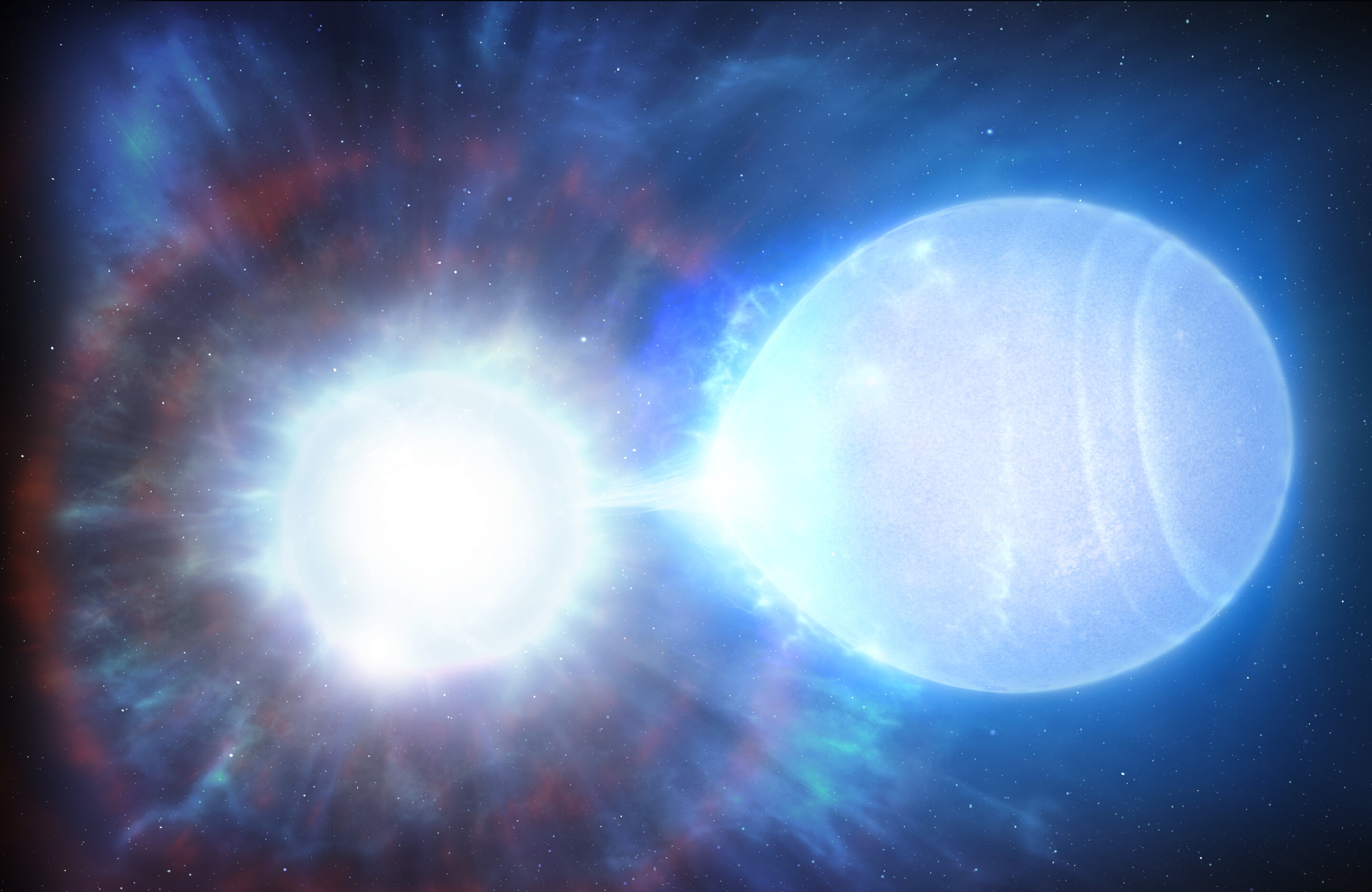This nearby double supernova is inevitable, here's the date... which will surprise you 💥
Follow us on Google News (click on ☆)
This discovery, published in Nature Astronomy, reveals an exceptionally massive pair of white dwarfs. With an ultra-tight orbit, they are inexorably drawing closer, doomed to collide, which will trigger a double supernova. The explosions are predicted to occur in... 22.6 billion years, give or take 1 billion.

Artist's impression of the binary system before the explosion. The two white dwarfs, separated by a minuscule distance, will both end their lives in a supernova.
Credit: University of Warwick/Mark Garlick
Type Ia supernovae serve as cosmic benchmarks for measuring intergalactic distances. They occur when a white dwarf accumulates too much mass, triggering a thermonuclear explosion.
James Munday, lead researcher of the study, highlights the importance of this find. Located in our galaxy, this system confirms theoretical predictions made decades ago. Its proximity allows for detailed observations, impossible with more distant objects.
The combined mass of the two stars exceeds that of the Sun by 56%. This characteristic ensures their future explosion. Despite their violent fate, they pose no danger to Earth, even at this relatively close distance, and especially given the extremely distant timeframe.
Dr. Ingrid Pelisoli explains that this discovery suggests a higher frequency of such systems than previously estimated. It paves the way for a better understanding of the mechanisms behind Type Ia supernovae, which remain partially mysterious. The final explosion will be unimaginably violent, releasing colossal energy.
This study marks a milestone in stellar astrophysics. It provides valuable clues about the evolution of binary systems in our galaxy.
What is a Type Ia supernova?
A Type Ia supernova is a stellar explosion resulting from a white dwarf accumulating mass beyond a critical limit, known as the Chandrasekhar limit. This phenomenon occurs in binary systems where a white dwarf siphons material from its companion.
These explosions are so consistently bright that they serve as 'standard candles' for measuring cosmic distances. Their study allows astronomers to map the expansion of the Universe and understand the nature of dark energy.
The process leading to a Type Ia supernova can vary. In some cases, the white dwarf merges with another white dwarf, as in the recently discovered system. In others, it slowly accumulates material from a companion star, such as a red giant.
Despite their usefulness in cosmology, the exact mechanisms triggering these supernovae remain an active area of research. The discovery of systems like this one helps refine theoretical models and better predict their occurrence.
How do white dwarfs evolve in binary systems?
White dwarfs are the remnants of stars that have exhausted their nuclear fuel. In a binary system, their evolution can be influenced by their companion, leading to spectacular phenomena like supernovae or novae.
When two white dwarfs orbit each other, they lose energy in the form of gravitational waves. This energy loss gradually reduces their distance until they either merge or trigger an explosion.
The system discovered by the Warwick team is a rare example of a high-mass compact binary. Its proximity and characteristics make it an ideal object for studying the dynamics of such systems.